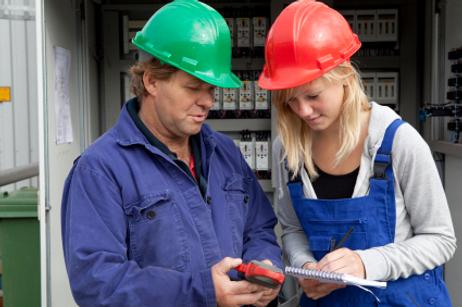Contrary to popular belief, not all prominent, high-demand careers require a college degree. According to the National Center for Education Statistics, 10 out of the 28 top fastest-growing careers could be pursued with vocational training available through public schools.
Subsequently, many believe public schools should provide more extensive vocational programs for interested students. While all high schools are required to provide students with general education courses, only a handful provide vocational alternatives.
What Type of Learning Coincides with Vocational Education?
Vocational-technical education programs provide students with practical learning opportunities and hands-on experiences to prepare graduates for a career following high school. As Massachusetts Public Schools explains, vocational programs allow students to develop technical, academic, and professional skills that can be used for either a professional pathway or a continuing education alternative.
While all states have vocational programs at various community colleges, some areas still struggle to establish or maintain functioning programs at the public high school level. Because the cost of these programs can often add an extra burden to a public school’s limited budget, these vocational courses are frequently one of the first venues to be cut during a time of financial struggle.
Despite the balancing, financial planning, and professional accommodations needed to establish these programs, many states have shown tremendous strides in offering vocational opportunities. For example, Massachusetts is one of the leading states offering diverse and extensive vocational venues for students.
According to Massachusetts State Law, public schools that offer vocational programs must “Integrate academic and vocational education and shall include competency-based applied learning which contributes to an individual’s academic knowledge, higher-order reasoning, and problem-solving skills.” In fact, according to Massachusetts’ vocational course catalog listings, students in various public schools can attend training programs in fields such as:
- Culinary arts
- Horticulture
- Communications (design and visual)
- Cosmetology
- Marketing
- Early education and care
- Carpentry/electricity (including heating, ventilation, air conditioning, etc)
- Drafting
- Programming and web development
- Automotive repair, technology, and refinishing
After completing the vocational and high school requirements, students are prepared to pursue immediate employment, advanced education opportunities, and added career choices.
What are the Benefits of Vocational Training?
Not only can students embark upon a professional or academic career upon completing all vocational requirements, but many high school graduates even continue to immediately pursue apprenticeships, specialized college programs, or other professional routes.
With the diverse skills acquired from their public school vocational programs, students can gain unique benefits, such as:
- Hands-on learning experiences
- Training from licensed vocational teachers
- Program-specific experiences and knowledge
- Safety, support, and remedial interventions and training
- Career guidance, placement support, and career explorations for incoming 9th graders
- Academic and vocational assessments
- A high school diploma and proficiency certificate
- Co-ops, internships, job shadows, and/or apprenticeships
In addition to the academic, social, and personal benefits of vocational opportunities, many leaders assert that even non-vocational students can benefit from these programs. Specifically, as vocational programs often cater to the needs of active and kinesthetic learners, students enrolled in a vocational class can engage with more movement, hands-on activities, and unique processes for enhancing their education. When these same students are in a traditional, passive classroom setting, they often struggle to remain quiet and focused, potentially resulting in an overall distraction for all students and the instructor. As a result, students who are provided with the ability to choose their classroom and instructional method with greater freedom may be more able to improve their overall learning experience and behavioral development.
How Can I Find Out More About Vocational Opportunities?
While not every public school offers vocational programs, many public schools provide students with cooperating opportunities. For example, some schools allow students to attend nearby schools or community colleges to receive instruction, practice, and training. Students and parents can meet with their public school’s guidance counselor or administrator to find out more. If the public school does not have any current vocational options, parents and students can ask their counselor about potential ways in which a student can pursue a nearby school’s program.
Questions? Contact us on Facebook. @publicschoolreview
Additional Resources offers podcasts on this topic.















